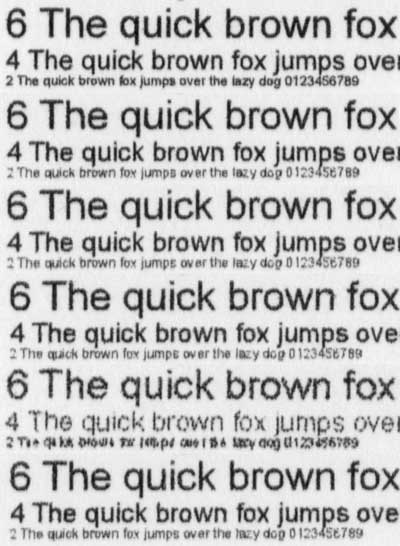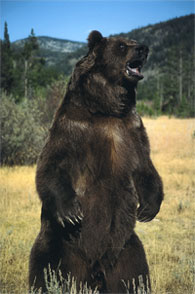 |
||
|
||
| ||
HP held its annual seminar, HP Fishing Party in Moscow, Russia, on August 29, 2006. Visitors had an opportunity to examine new products, try them in action, and ask their questions. But it's one thing to see this grandeur at the seminar and another to examine these models in our testlab, tete-a-tete, without the guidance of "parents".  Our first review will be devoted to the flagship of modern photo printers from HP - HP Photosmart D7363.
General ImpressionsOn the face of it, the D7363 resembles Photosmart 8253. But the lifted rear part of the printer makes it larger. The device looks heavier, but the printer does not look disproportionate. Dictated by fashion, the device coloring got lighter (Mercedes C-klasse and RAV4, presented in Paris were white, as well as some Lexus models, which tells volumes). Silvery inserts are used sparingly, the main colors are light gray (mat) and milk-white (glossy).     The layout of main components of the device is practically the same.      The main advantage of the new D7363 is certainly its large 8.6 cm touch screen. Thanks to this element, there are much fewer buttons on the printer, and the user menu is much more convenient and faster.  The paper input-output tray was slightly modified, traditionally implemented as a single unit. Its upper part (input) cannot be removed anymore. It can just be lifted by 30-40 degrees, which is sufficient to put paper in the main and in the photo trays conveniently (it can be drawn out as well). The main tray is spring-loaded, which is noticeable at the end of its stroke. It is drawn in to ensure the right position of the tray. Installation, DriverFortunately, you can now control the process of installing the printer. Now we are not limited to two options (full or minimal install). We can easily refuse to install any application or service. It made the installation process much shorter. Now what concerns the graphical component of the printer driver. It has been improved as well, four tabbed-pages (instead of seven) contain all services. They are arranged more logically, and it's much easier to use them now. 
  
  There are practically no messages that you have chosen a wrong printing parameter thanks to the new interface. You select a task (icon) and then choose a print quality from the list. Then you select a paper type, corresponding to the selected quality, and get the list of supported formats, etc… Everything is simple, it's hard to make a mistake. If you have doubts about print quality or paper type, you can try autodetect. Display and MenuAs I have already mentioned above, the D7363 touch screen is rather large. You can comfortably browse photos, make some changes (crop, rotate, brightness, effects, frame), and easily navigate the menu. Factory alignment of the touch screen makes it unnecessary to align it manually (like in a PDA). It reacts to light presses. All changes are displayed as ticks, icons, or visual effects.       The main screen in Photosmart Express has four options: view/print, save, exchange, and parameters. Each option is self-explanatory. What's the process of direct printing?           
 
 
 You insert a memory card into the card reader or a flash drive into USB and wait for the printer to determine a number of photos there. Then we proceed to the Browse/Print page. You can either use Print Master (choose photos, determine paper format, layout, and make necessary changes), or select paper format and print all photos in your storage media.  But direct printing is not limited to memory cards and flash drives. You can also print from photo cameras that support PictBridge and mobile devices via Bluetooth. Special Bluetooth adapters are out of the question. The printer worked well with such adapters as TREDNDnet (TBW-101UB) and Samsung (W5C00100) in the course of our tests. By the way, that was the first time we managed to use TREDNDnet with a printer. Other attempts with other printing devices yielded negative results. PrintingWe'll use our complex test procedure to find out what HP Photosmart D7363 can do. Traditionally, we'll start with printing text documents.
As you can see on the table, we failed to reach the record-breaking speed of 32 sheets per minute. But compared to the first model Photosmart 8253, which opened the new print technology from HP, we can say that the printer is faster in some modes.  We have no gripes with print quality of the D7363. The printer demonstrates excellent quality in all modes. Test page We have no gripes with the test page either.  Smooth gradients, excellent color rendition, sharp readable text without filled areas, thin wavy lines have no leakages or steps. Complex multicolored gradient bar shows smooth transitions without jumps or noticeable raster. It all concerns printing on Premium Photo Paper (glossy) and its semi-glossy counterparts. Printing on new HP Glossy Photo Paper (HP Advanced) is a tad different. To all appearances, it has better absorbability and it's whiter. As a result, printed photos are much warmer than the original images. Text reverse and circles in test charts (vector graphics) are a tad blurred. Let's see these effect in printed photos. Photos Photo printing is probably the main job of this printer, so we'll focus on this very function (previous tests give us some ground to hope for high results). 
   So, here are four photos that characterize light and shadow details as well as rendition of flesh colors and print quality in grayscale. The D7363 again demonstrates very high quality, a high level of detail and color rendition. No additional print settings for Premium Photo Paper (glossy and semi-glossy) are required. But you'll have to configure your driver for HP Glossy Photo Paper. To avoid too warm photos, you should open the Additional Color Parameters menu, on the color tabbed-page and move the Color-Tone slider five points colder. The yellow slider should be moved to 8-10 points lower. Of course, a profile for this paper type would have been more convenient, but these simple adjustments also produce authentic results.   The printer easily renders metallic colors (gold and silver), living colors. Printed colors are bright and snappy. What concerns printing from memory cards or a flash drive, we can only note a reduced detail level. If you don't cavil at a photo and don't compare it with the photo printed from a computer from time to time, the difference is practically unnoticeable. Having enlarged the photo, we can see that it's insignificantly blurred. That's probably all the difference, except for printing without borders in direct mode and the fact that you cannot select print quality (such photos compare with imprints made in high quality mode). In order to avoid questions about the Now about breaking records. As you might have already guessed, the printer did not demonstrate its fastest results, no matter how hard it tried. The table with text print speeds shows a minute and a half, no less. We printed text from Adobe Acrobat 6.0, it was a single-page PDF file, standard 5% fill (see the test procedure), KUM LUX 80 g/m2. We measured pure print time.
It took HP Photosmart D7363 thirty three seconds to print a 10x15 cm photo in Fast Draft mode with automated paper type detection. We used HP Advanced photo paper with a special bar code at the back side. We measured pure print time. That's far from the official twelve seconds, but the print quality is up to the mark. If I hadn't known in what mode this photo was printed, I'd have said that it's at least Normal or High. You can make sure it's true on the sample below. The real size of the selected zone is 16x25 mm.   Notes You can touch photos printed on the new paper almost as soon as they are printed without risk of smearing them. According to our water resistance tests, printed photos easily endure cold and hot water. Colors are not washed out even if subjected to additional mechanic action. The only problem, revealed only in case of "hot bath" - small yellow halo at the borders of print area. But do your photos often get such treatment? ConclusionIn conclusion, we can predict that HP Photosmart D7363 will be popular. It's a brilliant, simple, and feature rich device. Unusual design of the printer is a matter of taste, its operation leaves no room for doubts. HP Photosmart D7363 is an excellent successor to Photosmart 8253. It's another proof of high quality of HP printers.  HP Photosmart D7363 Inkjet printer was kindly provided by Hewlett Packard Write a comment below. No registration needed!
|
Platform · Video · Multimedia · Mobile · Other || About us & Privacy policy · Twitter · Facebook Copyright © Byrds Research & Publishing, Ltd., 1997–2011. All rights reserved. | ||||||||||||||||||||||||||||||||||||||||||||||||||||||||||||||||||||||||||||||||||||||||||||||||||||||||||||||||||||||||||||||||||||||||||||||||||||||||||||||||